[Jane Elder, Executive Director, Wisconsin Academy of Sciences, Arts and Letters]
I want to welcome you all to our Academy Talk: “The Entrepreneurial Edge.” Tonight’s talk is the third event in our year-long series “Growing Our Creative Power.” This series aims to explore how specific investments in the knowledge economy and our creative sectors can make a brighter future for Wisconsin.
At the Wisconsin Academy, we’re known for our programs and publications that explore, explain, and sustain Wisconsin thought and culture. The work that we do and the events that we host, like the one you’re attending tonight, are all designed to bring people together at the intersection of the sciences, arts, and letters to inspire discovery, illuminate creative work, and foster civil – civil dialog on important issues, which seems more important now than ever.
Tonight, our speakers will discuss the role that creativity and imagination play as a wellspring for the leading of innovation, new ventures, and turning ideas into action. We’re very excited to here from three leaders in this business from around the state.
Tryg Jacobson is the co-founder of Jake’s Cafe, a creative community and co-working space in Sheboygan. Ben Richgruber is the executive director of the Eau Claire Regional Art Center and leader in the Confluence Project, an exciting new $45 million performing art center in downtown Eau Claire. Gregory St. Fort is the executive director of 100state, a co-working community in Madison, and also founder of the Let’s Keep Building, which fights for social justice through entrepreneurship.
Moderating this evening will be George Tzougros who, since 1996, has served as executive director of the Wisconsin Arts Board. This state agency promotes and supports the arts in education, stimulates community and economic development, and serves as a resource for people of every culture and heritage. Tonight, Tryg, Ben, and Greg will give their presentations, and then George will lead them in a discussion here at the table.
And now please help me give a warm welcome to George Tzougros.
[applause]
[George Tzougros, Executive Director, Wisconsin Arts Board]
Good evening, everyone. I am George Tzougros, the director of the Wisconsin Arts Board. I’m glad to be with you this evening. And my time up here is going to be very short, but I wanted to set a few terms out there for you because we’re going to throw them around, I think, as the evening progresses, and you should know what it is we’re talking about.
So, we’re going to talk about these three things. We’re going to talk about imagination, creativity, and innovation. And I think it’s really important that we know what we mean when we say these things. And the definition I’m going to give you comes from a book that’s called Imagination First: Unlocking the Power of Possibility. It’s something that the National Creativity Network has used for these definitions.
Imagination is the capacity to conceive of what is not yet present or manifest. Creativity is imagination applied. So, imagination at work, if you will, to do or make something that flows from the prior capacity to conceive of the new. And innovation consists of further creative actions that advance the form, the depth, the reach, and the richness of that which has been brought into being.
So, those three terms we’re going to toss around a lot. We often hear about innovation. We rarely hear about the other two. That’s why I was so glad that Jane and the Academy wanted to do this conversation because I think it’s important that we acknowledge imagination and creativity. I also think it’s important that we acknowledge that imagination and creativity are not the sole purview of the arts but of human expression. So, it can be science, it can be math, it can be technology, and of course it can be the arts. And we want to make sure that we put that out there for you.
And then, a couple of other terms, and then I’m going to sit down. The creative economy. You’re going to hear that a lot. What’s the creative economy? Well, let’s just say and agree with one another this evening that the global economy is the creative economy because if you’re going to produce a service, if you’re going to produce a product, if you’re going to change the world of social innovation, you’re going to need to have creativity. So, the creative economy is the global economy.
The creative industries, when we throw that term around, it’s all about the – the companies and nonprofit organizations that flow from the aesthetic side, the cultural side, the creative side. So, that doesn’t have a nonprofit status as its only place to be. So, architects, advertising firms, nonprofit arts organizations, artists and other creatives all find themselves in what we might call the creative industries.
And then, we want to also put out there, creative occupations because there are people who work creatively in all kinds of businesses, whether they’re manufacturers or they’re employers of any other kind. So, a – a graphic designer who works in a manufacturing firm is – is working in a creative occupation even though that business may not be thought of as a creative business.
So those are the terms I wanted to put out there on the table as our friends get up to start to talk. And so, I will cede the stage now to Tryg as he begins the introduction of the speakers and giving you a snapshot of themselves before we get into the full panel conversation.
[applause]
[Tryg Jacobson, Co-Founder, Jakes Caf, Sheboygan, Wisconsin]
Oh, thank our very much. I had a little bit of an opportunity to – to talk with a couple people before – before we got started, and I guess I just want to get a little bit, a few hands, how many people here are entrepreneurs or budding entrepreneurs?
[audience members raise hands]
Okay. So, we – Yeah.
And how many people are trying to start fledgling creative communities in – in old warehouses? Okay.
[audience raises hands]
[laughter]
So, we’ve got a little bit of both.
I’m going to tell you I was an ex-ad guy. I’d been 30 years in the advertising business and built up a really fascinating business in Sheboygan, Wisconsin. And I’d made the decision about seven years ago I was going to retire. I thought when I retired, which was in, you know, sort of the tailwind of this horrible, you know, housing, you know, recession or whatever you want to call it, that the – that the agency would stay, you know, where we were in Sheboygan, and I’d be able to collect rent, you know, and make some money in these four big buildings that I had and – and just live happily ever after. Well, that didn’t happen. They left.
So, now I’ve got 20,000 square feet of space, an old Baptist church, Carpenter Gothic house, a French provincial house, and – and – and a – a kind of federal style building. And there was tons of real estate downtown. Empty buildings. I mean, this was in 2009. It was horrible. And so, like, what are you going to do?
Well, I did what I tell my clients to do. You know, if you can’t be first in a category, what do you do? You create a new category that you can be first in.
[laughter]
So, I thought, you know what, I like creative people, and this is sort of a creative, hip environment. I think I’m going to start a creative community. Well, you know, who had ever done that before? This is 2010. Richard Florida’s book was just written, and he started to talk about this stuff, but nobody was doing it. You know, I thought, well, we’re going to start a creative community.
And so, I thought, okay, what – what do we have to do now? What do creative people want, you know? Well, I recognized that what I needed to do is I needed to cultivate an environment that would be attractive to creative people.
People put value in that which they trust. They put very little value in that which they don’t. So as an entrepreneur, one of the things you have to do is you have to cultivate an environment of trust. And so how do you do that?
An entrepreneur has to make a promise, and then an entrepreneur has to keep that promise. And the value – the value of that trust, the value that that trust that the – the entrepreneur creates is directly proportional to the uniqueness and the meaningfulness of that promise and how well they develop and keep a brand experience around that promise using what I would call sight, sound, touch, taste, and smell. You know, a whole experience, you know. So, as an entrepreneur, what are you going to do to create a very compelling experience that gets people excited, that makes them want to come in to your community?
About 25 years ago, I was inspired by a book written by Tom Chappell, and it was called The Soul of a Business. And the first thing that he said a business had to have was a statement of beliefs. I thought: Okay, I’m going – Im going to write a statement of beliefs after I’m done crying over the fact that I’m going to have to start this business all over again from nothing. And – and – and I’m naming it after my father so – so I knew that it could not fail.
[laughter]
But this was the statement of beliefs, and this is what I knew we had to have in the way of a driving force that would be made manifest in this promise that I was going to work for the rest of my life keeping. But it started in this statement of beliefs. Here it is, bear with me and give me a little bit more than a minute, Erin, because it’s going to take longer than that, but then I’ll be quiet and we’ll let the rest of the speakers go, but this is important.
Here’s the statement of beliefs that was the driving force of the Jake’s Cafe creative community:
“We believe that all human beings, regardless of race, color, or creed, religious or political beliefs, have inherent worth and are deserving of respect. We believe that the multidisciplinary creative and collaborative community at Jake’s Cafe is unique and it’s meaningful and that to sustain it we have to cultivate an environment of trust where people feel comfortable to ask questions and exchange ideas. We encourage our creative community members to use the four-way test when faced with difficult problems. Is it fair? Is it the truth? Is it beneficial to all concerned? Will it build goodwill and better friendships?
We believe in a clean, organized, and safe and visually inspiring environment. We believe in decency and the avoidance of foul and coarse language. We believe in using our natural resources wisely and to be good stewards of our environment. We believe that we each have to have a responsibility to cultivate the best relationships possible with our coworkers, our customers, our owners, our agents, our suppliers, our community. We believe that different people bring different gifts to the equation and that we have to not criticize and complete, but we have to complement and complete one another so that together we can make something much greater than we could make individually.
We believe that we can all be financially successful by well-behaving in a socially responsible, environmentally sensitive, and respectful manner, and we believe that we have an individual and collective accountability to the values, missions, and destiny of the Jake’s Cafe creative community.”
Those were our beliefs. Our promise was we were going to create an environment in which you felt and you had permission and felt safe to collaborate, to be creative, to express ideas, and it didn’t matter whether you were a filmmaker or whether you’re a speech pathologist. We’re going to bring all these people together.
So, today, and it was just my wife and she was faking it, you know, at the front desk, you know, as a receptionist trying to figure out how we’re going to get our first – first customer. It was empty. 20,000 feet, 65 offices, six conference rooms, two kitchens, two theaters. And this was – this was an agency in its time. And, today, we have 65 people working in our building, we have 44 businesses, 90% occupancy, and 39 different genres of industry represented in our building. It is a fabulously successful place.
[applause]
So, all I can say is that you got to start with a strong statement of beliefs that make creative people feel safe to be who they are, to create and to collaborate, and then project a promise that you know you can keep and a – and a brand experience that incorporates as many of the senses as possible, you know. Sight, sound, touch, taste, and smell. If you log on to jakescafe.net, you’ll see what I mean. Thank you very much. Bye-bye.
[applause]
[Ben Richgruber, Executive Director, Eau Claire Regional Arts Council]
Hi, I’m Ben Richgruber, Executive Director of the Eau Claire Regional Arts Council, and I’m here to talk to you about the Confluence Project, which is a project that we’ve got going on in Eau Claire that is a public/private partnership to redevelop our downtown. So, it’s a little different in that it’s not a startup business that you got cranking out of your garage and you want to grow and go from there. But we really took an entrepreneurial view of how we were doing what we were doing.
It goes back to about 2007 when Eau Claire County did what was called Clear Vision Eau Claire, and it was a community visioning process. What do we want to be in 20 years from now? And throughout that process, they came up with six key performance areas, and something that was very noticeable in three of those performance areas were facilities.
Eau Claire doesn’t have a lot of new stuff. We’ve been riding a lot of old buildings for quite some time. So, facilities kept coming up. And meant different things. Convention center, arena, arts center, recreation. What – what type of facilities were we talking about?
So, I co-chaired a committee with a gentleman from the university and our Visit Eau Claire executive director, and we went out and had some public forums and meetings and found out what – what do you mean by facilities. And it really was kind of a three-way split. There was a group that said we need a convention center in this town. That’s how we’re going to grow. We need – we need a big building for people to come and have their meetings. Then people said we need a bigger building. We need an arena. We cant – we need a 10,000-seat something so we can bring stuff in and throw big parties. And then there were a group of people that said we need a new arts center. The State Theater is falling apart, and the university’s arts facilities are falling apart. And they were all pretty equal with support, so we decided to move forward with the arts center.
It was something that we already had an infrastructure for. We had many different arts groups and users. The university has a strong arts and music program. And we were at risk of losing a lot of that if our facilities deteriorated and we couldn’t fix them up, there was going to be a problem. So, we really started looking at new arts facilities, how we could make that work, and what we could do.
And because the university needed some new toys and the community needed some new toys, we said: Well, what if we all get together in the same toy box and see if we can do some really cool stuff? And that, of course, brought a lot of questions and a lot of concerns. And I like that you mentioned trust so much because that – that was a big issue with us. And I think our project moved forward at the speed of trust. And we really started exploring different ways that we could do this. It was totally new and different for all of us.
The university will pay three times as much for a building if they don’t have to deal with other people being there. They can just own it and have it and do their thing. And the community arts groups, herding cats, man. Talk about personality
[laughter]
you put a bunch of different community arts groups together and it’s going to take a long time to come around to a – a decision and figure out what needs to be done.
But we did it. We started marching forward one step at a time, two steps, three steps, asking some questions, Okay that’s not going to work, let’s back up, let’s try it again. And what we ended up with was sort of a three-phase program or project. The first is a mixed-use development that just opened up this last week. That has about 100 apartments and about 400 students living in it right in the middle of downtown Eau Claire. This is on river front property that used to be basically just abandoned. We were a logging town in the 1800s, so everybody turned their back on the river because it was just work. Logs floating, we didn’t want to look at it. And now we’re finally turning around and facing those rivers, so this was a big part of that. So, the students moved in this week.
Next to that is a public plaza that will complement a new park that we’ve got across the river, and we’re going to put a foot bridge in. We are going to put that foot bridge in between the two to link them directly. And next to that is a new performing arts center that is a completely public/private pile of awesome, and it will have three performance spaces in it. It’s going to have an art gallery, rehearsal studios, workshop space for the community. The theater department from the university is moving into the building. Visit Eau Claire, our visitor’s bureau, is moving into the building. So, we will have the most amazing, creative collisions in the hallway, and that’s the part that I’m most excited about.
But to put this puzzle together, we really had to figure out completely new ways of doing things. We had to be very entrepreneurial in that sense. How are we going to solve this problem? Because it was completely different. We went up to the Capitol and talked to the folks at the State and said: Hey, the University wants to play along. We can save you a whole bunch of money if you partner in this. Okay. Are we going to own it? No, you’re not going to get to own the building. Oh, okay. So, we just get to use it for free? No. Okay. You gotta pay rent. Well, the university, UW Systems doesn’t believe in paying rent. They’ll reimburse you for stuff. They have lots of words to do things that they just don’t like to use. We won’t pay rent, but we’ll reimburse you for costs. Okay, great. So, we had to come up with that.
So, basically, every office door we knocked on said: No, we’re not quite sure how to do that, go to the next guy, see if he’s got an idea. So, we had to have all these conversations and figure out how it all worked and make this project come together.
There was a point in time where the university was going to own a part of the building, the community was going to own a part of the building, and we’d have a condo association up top that would operate everything and that just got to be a nightmare. There’s got to be an easier way. So, we just kept finding easier ways. And now it is going to be a nonprofit. The university is going to (whispers) rent, don’t tell them I used that word, space; there will be operating expenses that they will help cover to use the space. So, a completely new way of thought for the university to do what they do. And then the community arts groups are going to be in there and using that space and completely new ways that we can interact with each other being in the same building.
Like I said, the theater department is moving in. So, when it comes time to build sets and run shows for all these local community theater groups, they’re now going to have this army of students that want nothing more than to learn about the arts and to do this type of work.
And then the asset of having the mixed-use building and all those students living right next door was very deliberate. Those apartments will be rented out to students who have an affinity for the arts. You might be an accounting major but you’re in the marching band, and you’ve got that passion in you. And we want that live/learn community. So now you’ve got all these creative students living over here and this building that is their playground right next door.
There will be maker space in there. All of the university spaces by day, the scene shop, the costume shop, prop shop, all those spaces by night now become community spaces. So, by collaborating, we are now able to get all of that space in one building, and we’re getting it for a fraction of the cost. If any of us had to do this on our own, we wouldn’t be able to afford it. But those partnerships and the trust that we’ve built have allowed us to move forward with a much larger project.
And I’m very excited, as are our architects, who are sitting in the room today, that just yesterday we started moving dirt on the arts center. And we’ll be open for the 2018-’19 season. So, I will sell you season tickets tonight.
[laughter]
Credit cards are accepted.
And that’s kind of our story. It’s a really cool, big thing, and it’s – its been very entrepreneurial in the way that we approach what is normally just a giant civic here’s a thing. So, thanks for having me.
[applause]
[Gregory St. Ford, Executive Director, 100state, Madison, WI]
Hello, everyone. My name is Gregory St. Ford. I’m the C.E.O. of Let’s Keep Building and Executive Director of 100state. So, I’m going to go through, focus on 100state but kind of give context with Let’s Keep Building. It – it kind of connects from my entire story.
So, I’m originally from, born in Brooklyn, lived in New York my entire life. I have a background in engineering. Of course, I do not do engineering now. [laughs] So, a lot of my experiences while I was younger in college was based on that I did not know what I wanted to do with my life. I – I knew I needed a degree because my mom said I needed to get a degree. [laughs] And that’s pretty much what – what I spent – went to school for was for that purpose. I knew I was going to – I can pass, but I didn’t know what my passion was.
While I was in school, I participated in a lot of different extracurricular activities just trying to, you know, figure out what I wanted to do. So, I ended up spending a lot of time doing a lot of different college events. You know, I got into fashion. I got into web design. And I was able to find my way. This is me testing entrepreneurship without realizing it. I got really good at social media when Myspace was still a popular thing, and I was really able to build a following from that to promote literally college events. That’s what I was, you know, I found out I was doing just a way to meet people and not just be in school doing engineering because I didn’t really want to do it.
As I was participating a lot of these arts activities, I was able to find a – a lot of traction in some fashion. So, I was able to meet some really great networks while I was doing events in college and, you know, was able to get into touch with a celebrity stylist and was able to organize events for New York Fashion Week, working with celebrities and different people in New York. This while I was also a full-time student and full-time job. Just me still trying out different things. My full-time job also unrelated. I was doing – I was an accountant.
[laughter]
So, talk about wearing multiple hats. And while I was doing all these different projects, I was working with my friends, and what we would do after – after every meeting, we would just say: Let’s keep building. And this was just kind of a self-encouragement for ourselves, just to say: Hey, we don’t know what the hell we’re doing, but let’s keep doing stuff. Despite circumstances that we may have been going through, despite, you know, trying to finish school or – or pay for school at the same time, we just would say that as a word of encouragement.
Of course, you know, at some point within this story, I taught myself web design, and letskeepbuilding.com was available, so I created a company called Let’s Keep Building, which was based on that idea of overcoming circumstance and still working on your idea and becoming an entrepreneur.
Fast forward. I moved to Madison in 2014, and I carried over my company here when I moved here and was able to find my way through to 100state. And I became a member – a member there maybe a few months after I moved to Madison.
I ended up working with 100state in organizing a lot of the events because of my background, which is really fun in engaging the entrepreneur community in that way. I already had a lot of experience doing that. Fast forward. Became the executive director in June 2015. So that’s kind of why I’m here today.
So, fast – going backwards to the 100state story. So 100state was founded in June 2013 by a bunch of former Epic employees in their non-compete phase. They wanted to work on different startup endeavors, so they created a co-working space actually in a train cart. Literally a train cart. A bunch of guys just working on their ideas.
Actually, of course, eventually outgrew a train cart and moved to actually the address 100 State above Ian’s Pizza, literally around a corner. Fast forward, they outgrew that space and moved to our current location, 30 West Mifflin, and that’s when I came – came into the picture.
So, 100state, in terms of what it is and what we do: 100state is a co-working community. We have just over 300 members now. Just been, you know, growing every year in the last three years now, and we have a lot of really awesome success stories in the tech – tech sector as well as the nonprofit sector. So, we have companies like Redox, which – which is in the health tech space and, you know, now has 30-some-odd employees and actually moved out of our space because they didn’t fit anymore, and they were drinking all of our coffee.
[laughter]
So, we had to get them – get them out of there, and they kind of graduated. We had other success stories, like a company called Export Abroad which does – does data analytics for manufacturing companies. They were actually at the first White House Demo Day last year to meet the President. So, they’re a really awesome story of a guy from Rwanda just working on his startup and just really, really built it out.
We have another really awesome company called Mark-A-Moo, which does image recognition software for clothing. So, take a picture of your clothing and you can see where you can buy that piece, and they get commission from that. So, these are really awesome stories that – of companies that literally started at 100state and end up finding their team at 100state.
So, what makes 100state work is definitely people. So, we’re – were pretty much a crowd source experience where a lot of different people contribute by being a member or being a sponsor, and each member adds value to the community. So, when we have someone join in as a member, one of the asks is, well, we know what we can do for you, but what can you do to contribute to the overall community because that has – that has an amplified effect.
So, if you came to 100state right now, which there are people still working right now, you’ll see a lot of people contribute in different ways, right? We have tables in our space that was actually built by one of our artists in residence. So, the actual furniture built by a member. If you see a couch in this space, that’s probably a member’s couch. They moved away and said: Hey, keep the couch. A lot of our tables from our accountant: Hey, you guys need some tables. Here’s some tables that you can use.
The actual physical space is actually the contributions of – of various community members. And because of that, we have a collective ownership of the space. So, we all care about it, and because of that, we’ve been able to grow because what we’ve found out is we see members giving tours through prospective members about our space. In fact, 80% of our members are referrals from other members. So, a lot of what happens is just that everyone’s taken ownership of this – of this community and really getting involved from, you know, a member cooking pancakes to a member hiring another person in his space because of a business that they’re working on. So, a lot of shared ideas, a lot of interaction.
We also work with the outer community with a lot of different initiatives. So, an example, tomorrow we’re working with The Cap Times, which is a local publication in Madison, and we’re doing an event on creating a racially diverse leadership. And we’re going to have – have about 200-plus people there learning about leadership and how we can have more diversity in Madison in – in a leadership standpoint – from a leadership standpoint. And these are different ways we just engage with community. We work with various different sectors. We’ve done brainstorms with the city. We’ve done brainstorms with the homeless. We’ve done a lot of everything just keeping people engaged into what we do and, you know, leveraging to pool the talent to, I guess, you know, you know, work on ideas and make the city even greater.
[Tryg Jacobson]
Cool.
[Gregory St. John]
So, that’s – thats the quick version of it.
[applause]
[George Tzougros]
So, that – thats just amazing. Don’t you feel the energy coming off the three gentlemen who’ve just spoken? I’d like to bottle that up. I could use it.
So, I wanted to start with a question about imagination. So, where does imagination enter into your work? How do you keep it nurtured for yourselves, and how do you nurture it with the people around you?
[Gregory St. John]
Oh, imagine – Okay. I’ll start. So, imagination, I guess it comes from just, you know, kind of understanding, I guess, what is – from the problem-solving mentality, right? Sometimes you may have, you know, limited resources and the idea that, you know, I guess on my end is literally working with different people with different perspectives so they may be able to see something at a different angle that you may not have thought of.
So, someone who’s an artist and someone who’s a nonprofit, runs a nonprofit organization, and someone who’s a developer, who’s – whos a programmer, you know, when you put them in a room in one place, you’d be surprised, like, what – what cooks out of that. And that’s kind of what inspires me is being part of that conversation with people. Im very – my imagination comes from being in a room with people.
[Ben Richgruber]
I guess I can echo that. A lot of the ideas that led to Confluence and many of the other projects that are happening in Eau Claire right now were people, and not just your normal silo of people. We would all bounce ideas off of everyone else. I mean, with Confluence you’ve got university folks, you’ve got the local arts community, developers and, you know, funders and all these other people coming together to say: We’ve got these problems, how do we solve them? And beer. You know? Happy hour.
[laughter]
A lot of good – a lot of good napkins were drawn. But it is and there – there is that social component too. Like, it can’t just be like, sit down, business, here’s the agenda, go. Like, you’ve got to take that time to get to know each other and relax, and that will help get those new ideas out and – and then you can – then you can have a little bit more fun, and then you start – you’re looser and more free to explore those crazy ideas because there is no judgment. I mean, once you hit that level of friendship and trust, then you can do all of that stuff. So, people, definitely people. You know, get out of – get out of your office, go out of the cave for a while, and just go, you know, talk to people and be inspired, and that will sink in, and when you least expect it, that idea will come popping out.
[Tryg Jacobson]
For – for Jake’s Cafe, we – we launched Jake’s Cafe with – with the statement of beliefs, but we also launched it with a – a crazy ad. It’s like, you know, what happens when Lady Gaga dances with Frank Lloyd Wright, you know?
[laughter]
And it’s this idea of trying to take two, you know, totally different creative disciplines and put them together in the same room and – and see what happens. It’s like, you know, playing with chemicals when you’re a kid, you know, in the basement. And so, when we started Jake’s Cafe, people started wandering in. They – they latched on to the statement of beliefs. They liked it. They thought: I want to be part of that. So, we had two young filmmakers from Glenbeulah called the Leclerc Brothers. Amazing prodigy filmmakers. They were like, 16 and, you know, 18 years old. And – and now they’re – theyre, you know, theyre in L.A., you know, shooting in Hollywood, doing awesome stuff.
But at any rate, we used these two kids and then a graphic designer and a writer and a few other people in the cafe and we said: We’ve got to find you guys a problem to solve, you know, where you can really put your imagination to work. And we thought: You know, we – what – what can we do to fix Sheboygan County, really put Sheboygan County on the map, and to jump start this place so we can really get things started again? Because people were being laid off, buildings were empty, you know, the business climate wasn’t all that good back in 2010.
These two young men pulled together a copywriter, a graphic designer, a web designer and a few other people and they created a film called The Promise of Sheboygan County. And if you get a chance, look at it. It’s an amazing – it’s a beautiful done film. It’s just elegant. These two kids went around and interviewed every C.E.O. in Sheboygan County from, you know, each city. And they got really beautiful sound bites. And then they also went and produced – and got really great B roll, and they combined the B roll and – and the sound bites and they put it all together into this absolutely gorgeous film. And they – they – they – they showed the film downtown Sheboygan at the newly restored Sheboygan Theater. 800 people from around the community came. And the most beautiful thing was is it not only changed the perception of what people thought about Sheboygan County, it changed the way that people in Sheboygan County thought about themselves.
And it gave them the confidence, you know, that they needed, you know, to really turn this county around. But that was imagination, you know, at – at work. It was – it was taking a problem and giving it to a group of creative people and saying: All right, figure it out. And that’s what they did.
[George Tzougros]
The great result of that too was that ultimately, they showed that film in the hotel rooms in the area. So, if you were coming in and you were staying in the hotel, you got this thing on the TV that was telling you all the great things about Sheboygan County. So, if you happened to be somebody who was traveling through and might want to start a business or wanted to relocate your family there, you had this thing that was playing on – on the television, which is really cool.
[Tryg Jacobson]
Yeah, beautifully done by, you know, two young men who were making films in their, you know, in the attic of their – in the attic of their barn out in Glenbeulah. And you see the film and you’re like, this looks like a Hollywood production.
[Gregory St. John]
Nice.
[George Tzougros]
So, when we talk about these things, we often can talk about how wonderful because we have the – the beauty of hindsight. We can say all of this stuff really worked beautifully. It’s all great. But what were the challenges that you faced along the way? What would you say your biggest challenge was in establishing the – the entity that you’ve got going now? Go ahead.
[Gregory St. John]
Yeah, I think originally a – a – a big challenge we had was, I guess, identifying the right resources and also picking the target market. That was really a challenge, right? Cause, you know, you know, sometimes it may make sense to pick a niche group, and then other times maybe not so much. And we were having difficulty with identity because in the beginning we were identified as, okay, this is a place for former Epic employees to come in.
[laughter]
Cause that’s where it started. Then it became this place where just, you know, for specific tech startups. Then it became this place where a bunch of nonprofits came into. And then, you know, then it became, well, the space is also an art gallery, so only artists are here. And we had difficulties with brand message with then in turn hurt our ability to grow. So, we had to – it took us some time to figure out what is the right message that makes sense so people to understand what is actually happening here, right? Cause, essentially, it’s all of these different things. But, we had to – that was a big challenge because if you can’t get that right, then, you know, there’s economic implications for that. So, once we were able to get that right, then we were able to kind of become this self-sustaining entity.
[George Tzougros]
Yeah. Whatever that is has to be invitational to everybody that you want to come in.
[Gregory St. John]
Yup.
[George Tzougros]
Until you get the invitation right, people don’t know whether they’re welcome or not.
[Gregory St. John]
Yup.
[George Tzougros]
Yeah.
[Ben Richgruber]
Our many challenges – we had – it’s obviously a big physical downtown redevelopment project, and with that comes all kinds of political excitement. You’ve got tax dollars in there. You’ve got all these different user groups that are in there. And Eau Claire has a history of not getting stuff right. You do the study, it sits on the shelf for a long time and no one really does it, or we try this and it failed. So, I was watching The Princess Bride a few months ago.
[laughter]
And I’m like this is our project. Like, Wesley is carrying Buttercup into the Fire Swamp to try and get away from Humperdinck and his crew, and, you know, Buttercup is like: “Wesley, we’ll never make it through.” And then Wesley says what basically became our Confluence motto is: “Nonsense, you’re only saying that because no one ever has.”
[laughter]
Like, we can do this. You just need to take your time and deal with it. And, you know, we ended up with two different referendums because we had city funding that we were asking for and county funding. So, the whole project there’s like philanthropy, city, county, state, and – and everybody is playing along.
So, there was a group that, of course, the C.A.V.E. people, Citizens Against Virtually Everything.
[laughter]
So, they started a referendum in the city, and they said, well, we should have a referendum to have more referendums, is basically what it was. So, that was nonsense and ridiculous, but it made us fine tune our message and it made us prove that we knew what we were talking about. Does this business model work? Will the financials work? Are the partners truly engaged? Can everyone afford to do what they say they can do? So, we – it – it was a challenge, but it also made us stronger. And then the fun part of that is we had another group start another referendum at the county level. So, the city level you had to vote no, and the county level you had to vote yes.
[laughter]
Yeah. Figure that one out. So, we had to get our message straight. We had to organize two different referendum campaigns, basically, political action stuff and really get our story out there. But in the end, it made our project stronger. What they thought would stop us and trip us up gave us the data, gave us the confidence, gave us the army of followers to do what we needed to do. And in the end now, it’s – its a much stronger project because we had to go through that. At the time, it was just horrible, and life sucked and there was more, that’s when I switched from beer to gin.
[laughter]
But it – it- it really got us a much stronger project, and I – I am even more confident in what we’re doing now than I was before. So, yeah, definitely trouble in River City when youre trying to –
[George Tzougros]
I’m concerned that you’re writing prescriptions for everybody now. From beer to gin.
[laughter]
[Gregory St. John]
Yeah.
[George Tzougros]
I’m afraid where we’re going next.
[Ben Richgruber]
Yes.
[George Tzougros]
Tryg, go ahead.
[Ben Richgruber]
Breakfast of champions.
[Tryg Jacobson]
Well, for the Jake’s Cafe creative community, there were three things. And I – I liken it to preparing the soil and then also, you know, also using insecticide and then the third thing is, you know, trying to cultivate an inspiring and fun environment.
The first thing is, you know, cultivating the soil. And that was all about ensuring that the – the beliefs and the statement of beliefs that – that we had developed as an organization were going to be something that we maintained. So, we had people that wanted to join the community. We could sort of tell, either with respect to the discipline they were in or the way they were, the way they conducted themselves, not a good fit. Sorry, we’d love to be able to take your rent, but we can’t bring you into the community. And we – we’d have to figure out a way, you know, to, you know, to do that. That was a challenge. You know, to be able to – to, you know, glean who we were going to bring into the community and who we weren’t.
The second thing was these people are creatives and they’re entrepreneurs and they’re deal – trying to deal with taxes and – and starting up an L.L.C. and where do you get an accountant and how are you going to get health insurance? All the things that are really roadblocks and that make it very, very difficult for an entrepreneur to – to get into this business. And then, you know, over time, we found it was exacerbated by the fact that many of these people that were good, that did have the entrepreneurial gumption to start a business, were also very attractive candidates for, you know, local area companies to sort of, you know, cherry-pick people from our cafe. Hey, how would you like to have free health insurance, you know, and have a job 8 to 5 and have your weekends free? You dont have to work 8 – and – and so we would lose some of our entrepreneurs to, you know, bigger area business.
The third thing that was a little bit of a challenge is trying to constantly, you know, fine tune your community as programming to the interest of the people in the cafe. You know, we started out with fun things like Thirsty Thursdays and wine and cheese tastings and – and – and TED Talk films and discussions and – and, you know, picnics and potlucks and things to get people together. And it continues to evolve. Now we’ve brought in an art gallery, we’ve started a little cafe and a restaurant, you know, in there. But you have to constantly be working and showing progress within the community. The moment you stop, the moment you stop, things start to get a little bit dead. You lose the hum. You know, people begin to start to migrate and wander and – and perhaps look for other opportunities.
So, the first thing is, you know: protect the soil. Cultivate it. Maintain the values. The second thing is do what you can to help these individuals deal with taxes and L.L.C.s and legal issues, because if you don’t and they don’t get the help and support from you, you know, as a leader in the community, they’re not going to stay in business. And then the third thing is constantly be looking for ways to enrich and – and create excitement in the overall brand experience within the community.
[George Tzougros]
So, you were talking about the business skills, and I think that’s a really interesting challenge because one side of the brain being that entrepreneur and thinking about the great idea may not also have the accounting skills, the fundraising skills, whatever. So, in each of your instances, who plays that role? It might be you. Or you might be connected to – to some other folks who can help play that role for you. So, who is that for you guys?
[Gregory St. John]
Yeah. I guess on our end we work with various partners in the community. So, you know, you can’t be an expert in everything. So, we focus on community-building and co-working, and we’ll find, you know, various partners, various law firms, you know, accounting firms, and so on, and, you know, they’ll do office hours or even assist with do – doing workshops. Different types of engagement. Some of them actually work in our space. So, you could be sitting in a table and right across from you is an accountant that you can ask a question to. They just happen to be working in our space as part of an ecosystem. So, that’s kind of how we’ve been able to, I guess, address those questions where we have an ecosystem where if you’re a member, there’s someone, like, right next to you. We have a lot of internal communications that – amongst members where there – there’s this organic referral system for those types of services.
And then we’ve, you know, from an operational standpoint, we made that part of our – our intake system. When someone is on-boarded as a member, like, right away here’s a list of resources that, you know, you may be able to access from within this space or from part of the outer community. So that’s kind of how we’ve addressed that.
[George Tzougros]
Gotcha.
[Ben Richgruber]
For us, moving through Confluence, everybody kind of jumped on to their specialty. Obviously, the university took care of the state funding, you know, the lead on that. They were the recipient of the state funds. When we had the referendums, the- the local arts groups jumped up and said: This is us, man, we can tell our story. And that really brought them all together. The developers are working with the architects and with the city on development agreements and easements and all that fun stuff when you build giant buildings that you need to deal with. So, everyone’s kind of working on their specialties there.
On the flip side, once we open, we expect to be that resource for all of the local artists and individual creators in the community. We’ll be able to leverage what we have in that building, whether it’s the maker space to give them tools to start or marketing expertise or business and finance, we want to be that for all of those artists that are – and musicians and any creative awesomeness.
[Tryg Jacobson]
At – at Jake’s Cafe, one of the things that we tried to do, and we realized this early on, we recognized it was very important at the beginning to have a very strong creative core of right-brainers. We quickly learned that an airplane with just one wing would, you know, do a tailspin and crash into the ground. So, we had to balance that out. We had to have some left-brainers. So, that’s when we began to bring in accountants and we brought in legal people, people that specialized in, you know, patents. We found an individual that happened to be a – a bookkeeper. We looked for balance so that we had, you know, all of those disciplines within the cafe so that when people want to sit down and have a cup of coffee, they didn’t have to pay, you know, $200 for a – a legal consultation. It could just be some friendly advice and guiding some people in – in the right direction so that they would exchange, you know, services.
Over time, the beauty of what was happening was that we could have somebody come in from the outside, maybe they had an idea for a – a – a – a soccer training method, and they would meet with an intellectual property attorney. And the intellectual property attorney they said: You know what? You’re going to need a name, and – and then you’re going to need a logo. And then, by the way, you’re probably going to need a brochure. And then you might need a video. And then you’re probably going to need a little sound design. You’re going to need a voiceover. All of these people were in the cafe. So, one project might come in, it would start with an intellectual property attorney, and then she would begin to route a project until it finally hit maybe seven or eight people in the cafe. Everybody made money. It all started with one person.
So, two things were important: to balance the right wing and the left wing so that you had, you know, you know, a multitude of disciplines so that, you know, people could get their problems solved without having to spend any money, at least at the onset. And the second was, you know, a kind of internal referral type of process where you could get people to collaborate and work on projects together and create some very outstanding things that you just couldn’t do if you had to hire all of these things independently on the outside.
[George Tzougros]
Interesting. Yeah.
[Tryg Jacobson]
So, it’s important to have balance in the community.
[George Tzougros]
Yeah. Did you know that this is Global Entrepreneurship Week? So, the – the Kauffman Foundation and 160 countries around the world are celebrating from November 14th through the 20th Global Entrepreneurship Week. So, it’s completely appropriate that we’re doing this now. 35,000 events worldwide are taking place to talk about entrepreneurship. And I think it’s interesting that we bring Kauffman up into the conversation because Kauffman’s got some things to say about startups and entrepreneurship in places. And, unfortunately for us, Wisconsin finds itself at the bottom end of that list.
And so, if you want to react to that, I think that’s great. And the other piece of that is, from your perspective as entrepreneurs, what’s missing? What can’t you get access to right now? Or the people that are working around you, what can’t they get access to right now that would be helpful to their work? So, go ahead.
[Gregory St. John]
Okay. Yeah, it’s always interesting, you know, when the Kauffman Foundation put out that report. What’s interesting about it is there’s a guy who works for the Kauffman Foundation that works out of 100state.
[laughter]
[George Tzougros]
That is interesting!
[Gregory St. John]
He works remotely, so we have a lot of remote employees that work there. But, yeah, in terms of, you know, what’s, I guess, consistent of – in terms of a needs, is, you know, maybe the most obvious, but it’s access to capital. And – and for sure, inclusion of all communities into the entrepreneurship space. And I think that’s been, like, you know, this – this, you know – it’s kind of a little bit of both. You know, I don’t want to weigh one above – above the other, but if everyone isn’t involved in it, you know, then, you know, there’s going to be inherent problems with that, you know, from the social standpoint and down to the gender standpoint where there’s, you know, certain gender gaps as well. So, if everyone isn’t, you know, playing and involved in it, you know, Wisconsin’s going to suffer from that.
So, I think if we work on some of these other issues, inherently entrepreneurship will do a lot better because, you know, all – any city or state around the country, you know, where they have the most inclusive environments, I mean, you know, there’s economic benefits from that. I mean, the studies have shown. So, thats one – thats from, you know – from my vantage point. That – I’ve seen that’s the problem. And, you know, we’ve been working, you know, on various different initiatives to improve – improve upon that and see how we can work with other partners on, you know, working that out with various events, in-increasing programming, even working with other nonprofits in creating technology, like, because certain areas do not have the technology to even create engagement for entrepreneurship in the first place. So, you know, you know, if we can kind of work together as, you know, communities and, you know, various cities across this state, you know, that statistic, you know, will improve, because, you know, who wants to be last, right? So.
[George Tzougros]
Nobody. Nobody.
[Ben Richgruber]
Our Confluence Project being what it is, it’s a little bit different type of hurdles and whatnot, but our local legislators did see that we had a hard time when we got to the state level with this new kind of cool tool that everyone could use. And at first there was some resistance from the folks at the state like, well, if we give you money for this project, everyone’s going to want money for their projects. And we said, awesome. If the state –
[laughter]
If the state can give 30% of the funds and get 100% use of the project, I think that’s a pretty darn good deal. And the same with everybody else. So, if you can put together this coalition, yeah, you should be giving them some more money.
So, our local legislators saw that it was difficult, and they’re in the process of trying to draft some language so hopefully it can be easier for other groups, other projects. Not just arts centers but any sort of public/private collaboration that you can do. If you’ve got an idea and there are different people that you can work with, try and knock down those barriers between – between different types of organizations or entities to just make an awesome project happen, make something really cool come together. So that’s the Confluence side.
Another hat that I wear, because I said I’d bring it up
[George Tzougros]
Yes, you did.
[Ben Richgruber]
a bunch of, there was a crew of us in Eau Claire that purchased and renovated an old run-down hotel, and we just opened up. It’s the Oxbow Hotel. Please come and visit. It’s a lovely place. It tells the story of Eau Claire quite nicely.
But as we were developing that project, that was hard, man. Like, there – and I think information, you were kind of saying that too. Just being able to access people to bounce questions off of them and – and figure out how on Earth do you do this. None of us had renovated old buildings before and there were plenty of people that have, so they could have said: No, don’t do that. That’s only going to be trouble.
[laughter]
But we’re just moving a wall a few feet. No, no you’re not. It’s bigger than that. Like, there are all these little things that – that, you know – I mean, capital, we found enough. We needed to do what we needed to do. There was some grant dollars available because of what we were doing and where we were doing it. But just access to info of people that we needed to talk to at the city level to support us with different permits and documents that we needed, you know, all the way down to starting business and just everything we needed, who we needed to talk to here and there. So, I think just access to information.
If there are, you know, ways to streamline and make that better, build coalitions and groups of people that can just talk. Like you guys have everyday sitting: Oh, I know a little bit about this. I know a little bit about that. Make those more available, you know, even if you’re not in those buildings, to get out and at least know where to find some of that info.
But we made it. We’re open. It’s beautiful. Come on down.
[George Tzougros]
Awesome.
[laughter]
[Tryg Jacobson]
I’ve never worked for anybody. In high school, I used to print posters and – and make money doing that, and I’d come back in the summer and pay for college just making stuff. When I – when I got out of college, I started a little glass etching business. And then I ended up, you know, writing, and then I went in the ad business.
I – I guess the point is that, you know, all through this, you know, the last – this last 40 years of my life, you know, you’d think I’d know how to run a business, you know? Because I’ve never really done anything else. Five years ago, I – I woke up one night and I had this horrible acid reflux. I almost choked. You know, I couldn’t breathe. I don’t know if anybody has ever had it, but acid reflux is a horrible thing. And I – and I went in to see the doctor about it. He wanted to put me on this regime, and I just was not into taking pills, especially Omeprazole knowing what it might do. So, I started hunting around and I found this ginger recipe and I – and I started working on this real strong ginger tea recipe. And, doggone it, that ginger tea wasn’t amazing. Holy cow. My – my slogan for it, I – I’m manufacturing it. Actually, it went on the market today. It’s called Jake’s Ginger Tea. It tastes like hell, feels like heaven.
[laughter]
And, you know, I’ve been messing with this for like three years. And I thought, you know what, my New Year’s resolution on January 1, 2016, is I’m going to take this thing to market. I don’t care what it is, but I’m going to take it to market. I don’t care what.
Holy cow. It is not easy to take, you know, something as simple as a beverage, it’s nothing more than ginger and water, you know, to market. The – the – a thousand pages of just gobbledygook and stuff and rules and regulations and bureaucracy and calling people at the state level and arranging for, you know, commercial kitchen use, you know, and getting certified and trained and getting your ingredients, you know, sourced properly and – and tracking all this stuff. Holy cow, you know?
And on top of this, you know, then you’ve got to figure out, you know, what’s an L.L.C.? You know, QuickBooks? How do I link QuickBooks to, you know, to my – my Square account? And – and – and that’s got to be linked up to the bank. And what about my credit card? How am I going to make that work with my Mint account? And you’re messing with all this stuff, and meanwhile you’re trying to get through all of this other crazy stuff. And – and then you’re trying to deal with health insurance, you know. Holy cow, how am I going to get health insurance? I’ve got to sell this ginger tea. And I’m thinking, you know, this is what people are going through all the time. It’s really, really a lot of work, you know? It – it’s not easy. And this is just ground up ginger and water and I’m sticking it in a blue bottle and putting a cap on it, you know. And it took a year. And – and I’d like to think that I’m, you know, reasonably, you know, astute at trying to figure these things out. So, George, I – you know, I guess the thing is that, you know, you look at Wisconsin, or maybe you look at other states, we have a tremendous amount of bureaucracy and – and – and – and – and roadblocks getting in the way of just, you know, innocent, you know, creativity that people just want to – they – they believe in something.
I believe in this ginger tea. I – I’ll tell you it’s going to make you live longer. It’s going to reduce inflammation, get rid of your headaches, it’s going to get rid of everything. I can’t put that on the bottle.
[laughter]
You know, I’ve been drinking this for three-and-a-half years, I’ve not even had a headache or a common cold. I’m – Im in really good health. I got lots of energy, you know? But I can’t stick it on the bottle because there’s a regulation that says you better not.
[George Tzougros]
You gotta get some for Paulie.
[Tryg Jacobson]
Youve got to get – you’ve got to do a test with like 100,000 people. Where am I going to get that you know? So, the point is, is that there’s a lot of bureaucracy and there’s a lot of bookkeeping stuff and there’s a lot of business mumbo jumbo and – and – and – it’s exacerbated by a very difficult, you know, health insurance system that, you know, people who want to get into this business have to deal with. So, if Wisconsin’s looking for a way, you know, to – to stimulate entrepreneurship, I don’t think creativity is our problem. I think everybody is born creative. Everybody here, you know, is creative. Everybody here can be an entrepreneur. It’s: who’s got the guts? Who’s got the patience? Who’s got the endurance to overcome – to overcome all of these crazy roadblocks along the way, you know? I think, as – as – a state, if we can figure out a program like called BizBox, and you just sign up to BizBox and they take care of all the stuff for you, now you just make your ginger tea, you know, and that’s it, you know.
Just make it, you know, sell it, and deliver it, you know. Keep the promise. We’d be far better off. But, you know, we need – we need something magic, like a BizBox.
[laughter]
[George Tzougros]
I’m going to – Im going to push back one second on the – the notion that we’ve got the creativity we need, and only in this respect: what do we do with the fact that our schools are actually draining creativity out of them, which means our future entrepreneurs are not going to have what they need to have an imagination and creativity that will get us those entrepreneurs for the next generation? So, speak to that if you want. Or leave it hanging out there for the crowd to speak to.
[Ben Richgruber]
Ill – I’ll speak a moment on that. Eau Claire has a couple of really great people doing some really great things right now. Justin Vernon is of Bon Iver fame, and he decided rather than move off to Chicago or New York or be where other Grammy winning musicians should be, he wanted to stick with a little house in Fall Creek right outside of Eau Claire. So, he’s got a recording studio out there and brings a lot of people in to do their stuff.
Another big community hero right now is Zach Halmstad, who runs JAMF Software, and they just built their world headquarters in Eau Claire, Wisconsin. A few hundred people that they employ right downtown. They actually, as soon as they heard about Confluence, wanted to build their office on top of the mixed-use development because they wanted to be as close as they could to everything that was happening there. So, Eau Claire is super proud of those two hometown guys. They both went – one went to Memorial; one went to North. And, you know, and they’re there. They – they grew up, they had these very successful businesses, and rather than take them somewhere else, you know, Zach’s got a P.O. Box. His first office was in Minneapolis because people need to see that address to take him seriously. But as soon as they did, he moved everything back to Eau Claire. It’s like: Ha ha, gotcha.
[laughter]
So, everybody’s super proud of these guys, and these guys, they had a very strong arts education. Zach has actually a music degree, and he runs a software company. So, you don’t need the I.T. thing. You need just the creative thinking part. And Justin doesn’t have a music degree, but that’s his job now is music. But everybody in town loves these guys and wants to just clone them and recreate them.
The thing that got them where they are, were those arts classes. Taking band and orchestra and – and taking art and just getting that inside of them so that when they were adults and knew that they wanted to do whatever they wanted to do, they already had it in them. They didn’t have to teach it, they didn’t have to train, it’s there. They’ve got the lever, pull it, here’s an idea. Heres, like, they just had it.
So, that does scare me that – that the education system is changing so much, and it’s: what about this, what about that? And rather – the arts are here as a class instead of being involved in every class. There is creative stuff in math. My accountants don’t love it when I talk about that, but it’s totally true.
[laughter]
We can make it work. So, like, we – we do need to fight like hell to make sure that that stays in the schools and across all subjects, not as its own, well, here’s art, but it needs to be in everything so that the next generation of Justins and Zachs have those skills just built in.
[George Tzougros]
I do want to make sure that we say thank you to these gentlemen and
[applause]
and I especially want to say thank you to the Academy, because it’s not easy for the Academy to put together these talks, and – and they’ve done a fabulous job. And the fact that you guys came out tonight to hear it is also really inspirational to all of us on the stage, so thank you.
[Tryg Jacobson]
Thank you all for coming.
[applause]
Search University Place Episodes
Related Stories from PBS Wisconsin's Blog

Donate to sign up. Activate and sign in to Passport. It's that easy to help PBS Wisconsin serve your community through media that educates, inspires, and entertains.
Make your membership gift today
Only for new users: Activate Passport using your code or email address
Already a member?
Look up my account
Need some help? Go to FAQ or visit PBS Passport Help
Need help accessing PBS Wisconsin anywhere?

Online Access | Platform & Device Access | Cable or Satellite Access | Over-The-Air Access
Visit Access Guide
Need help accessing PBS Wisconsin anywhere?

Visit Our
Live TV Access Guide
Online AccessPlatform & Device Access
Cable or Satellite Access
Over-The-Air Access
Visit Access Guide
 Passport
Passport

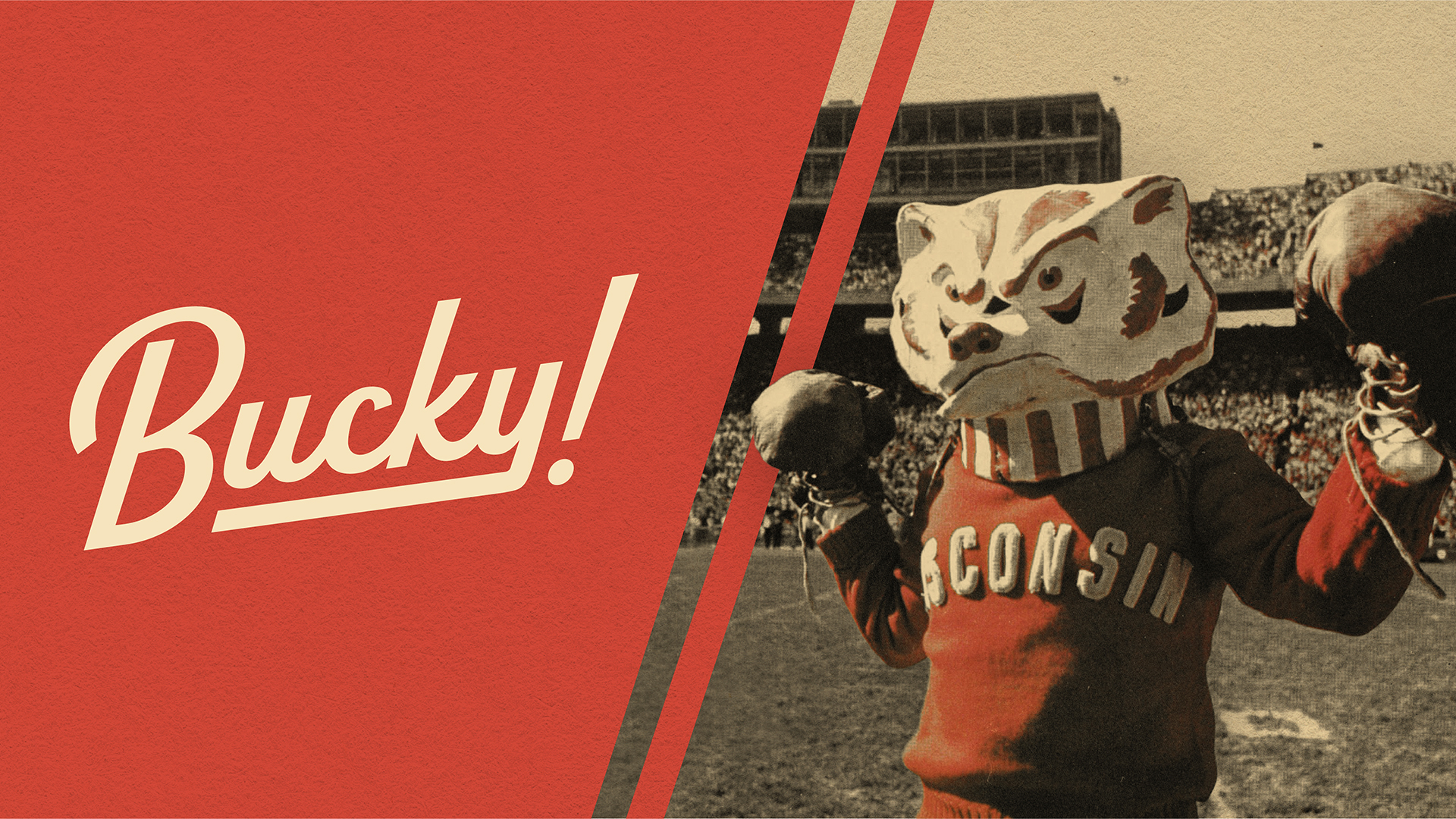
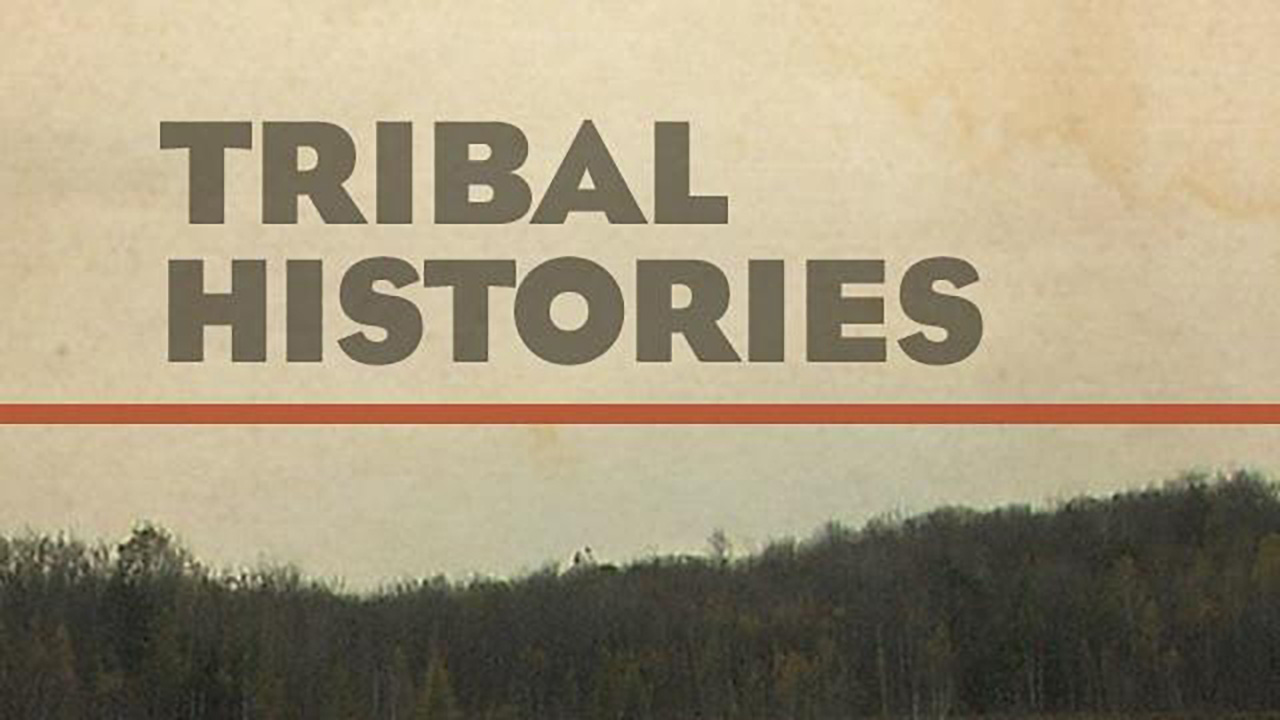
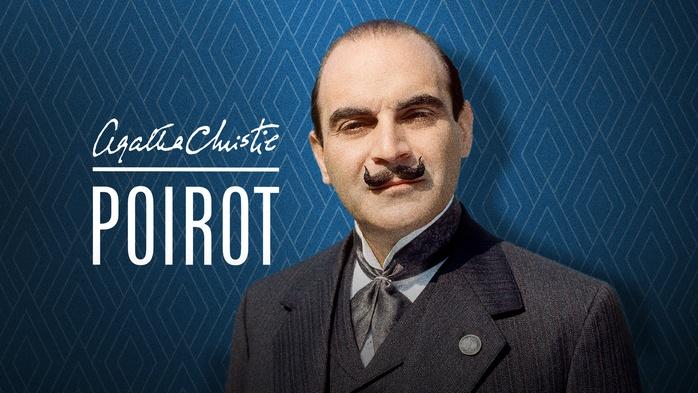

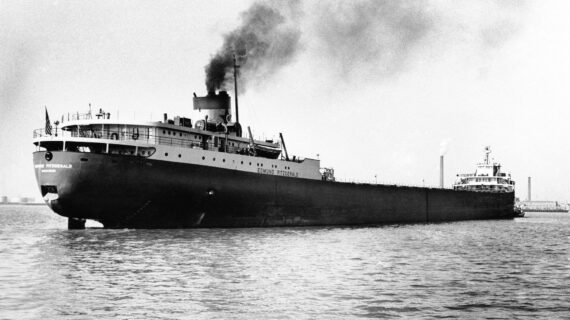
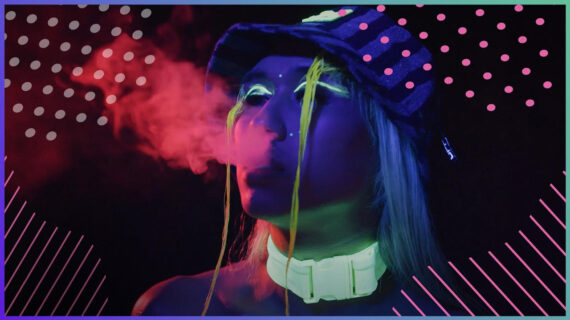
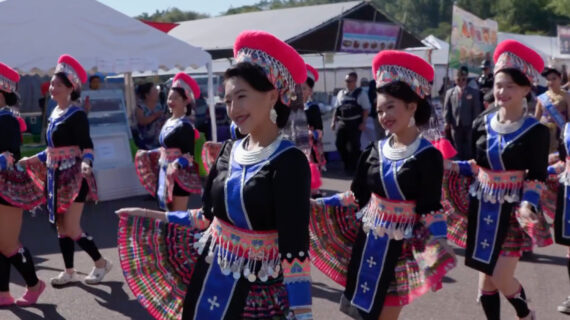
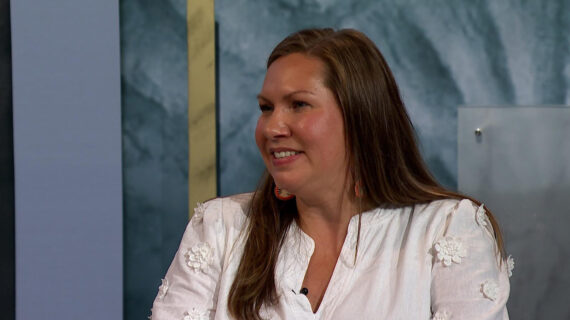
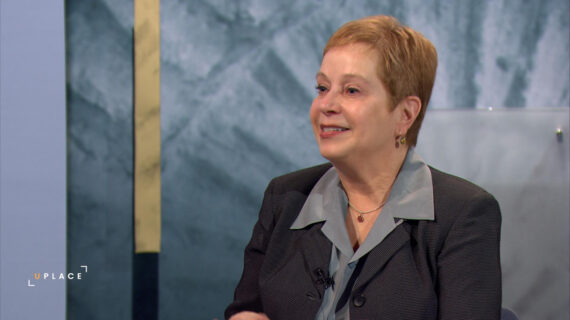
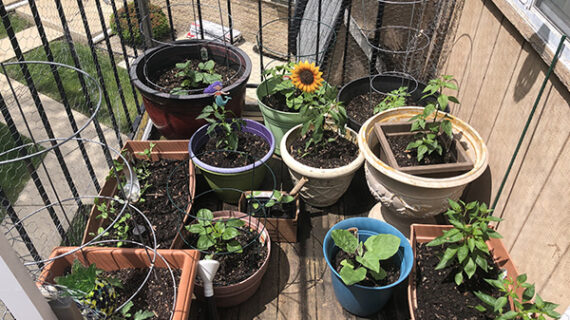
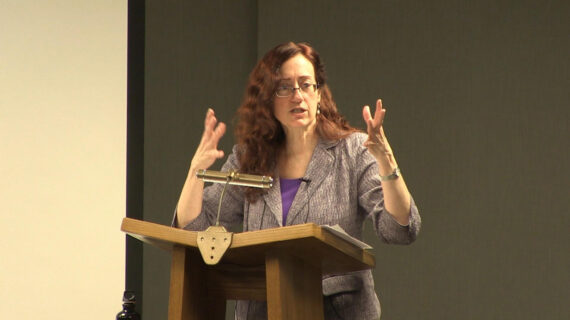
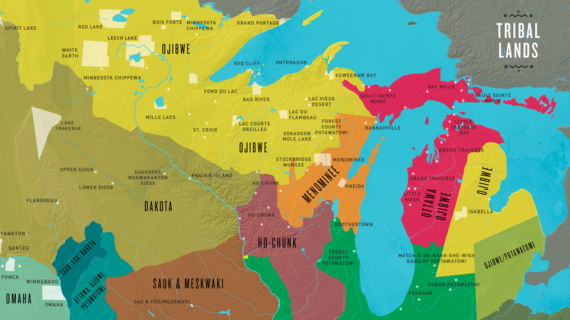
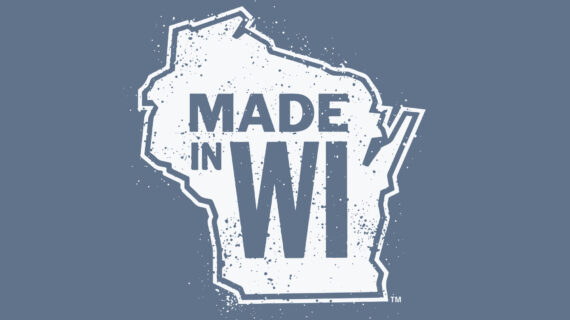
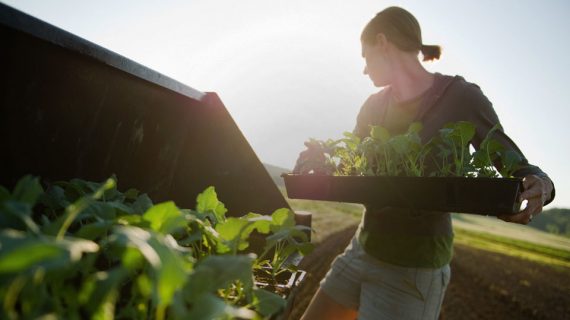
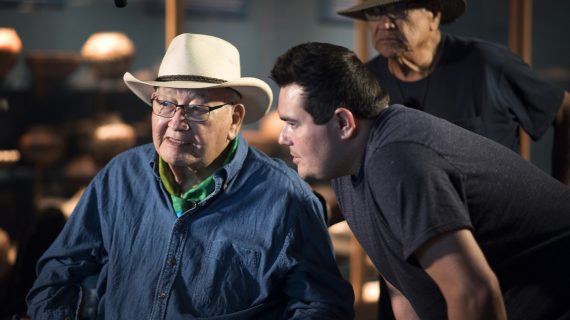


Follow Us